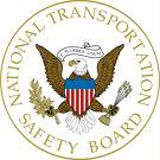
The pilot of a Pilatus PC-12 that crashed in Montana in March 2009 should have added an icing inhibitor to the fuel system before launching, the NTSB said in its final report on Tuesday. The board said the pilot failed to take appropriate remedial actions after icing caused low fuel pressure and a lateral fuel imbalance. The pilot then lost control while maneuvering the left-wing-heavy airplane near the approach end of the runway at Bert Mooney Airport in Butte. All 14 people on board, including 7 children, died. “The pilot’s pattern of poor decision-making set in motion a series of events that culminated in the deadly crash,” said NTSB Chairman Deborah Hersman.”Humans will make mistakes, but that is why following procedures, using checklists and always ensuring that a safety margin exists are so essential — aviation is not forgiving when it comes to errors.”
Investigators determined that the pilot didn’t add a fuel-system icing inhibitor, commonly referenced by the brand name “Prist,” when the airplane was fueled on the day of the accident.The Pilatus flight manual states the inhibitor must be used for all flight operations in ambient temperatures below 0 degrees Celsius. The NTSB concluded that icing in the fuel system caused a left-wing-heavy fuel imbalance. The increasing fuel level in the left tank and the depletion of the fuel from the right tank should have been apparent to the pilot because that information was presented on the fuel quantity indicator.This should have prompted the pilot to divert the airplane to an airport earlier in the flight, as specified by the airplane manufacturer.
Early in its investigation, the board said it had “no working theories” about the crash, but that changed when an investigator found a small set of microchips from the PC-12’s safety warning system that revealed the fuel-icing problem. The NTSB issued recommendations to the FAA and EASA, asking both agencies to make it mandatory for all aircraft that require fuel additives to place a placard near the fuel filler that notes the limitation. Earlier in its investigation, the board asked the FAA to require all children over age 2 to have their own seat and an appropriate child restraint system during takeoff, landing, and turbulence. The board’s synopsis has been posted online, and a full report will be posted in a few weeks.


































